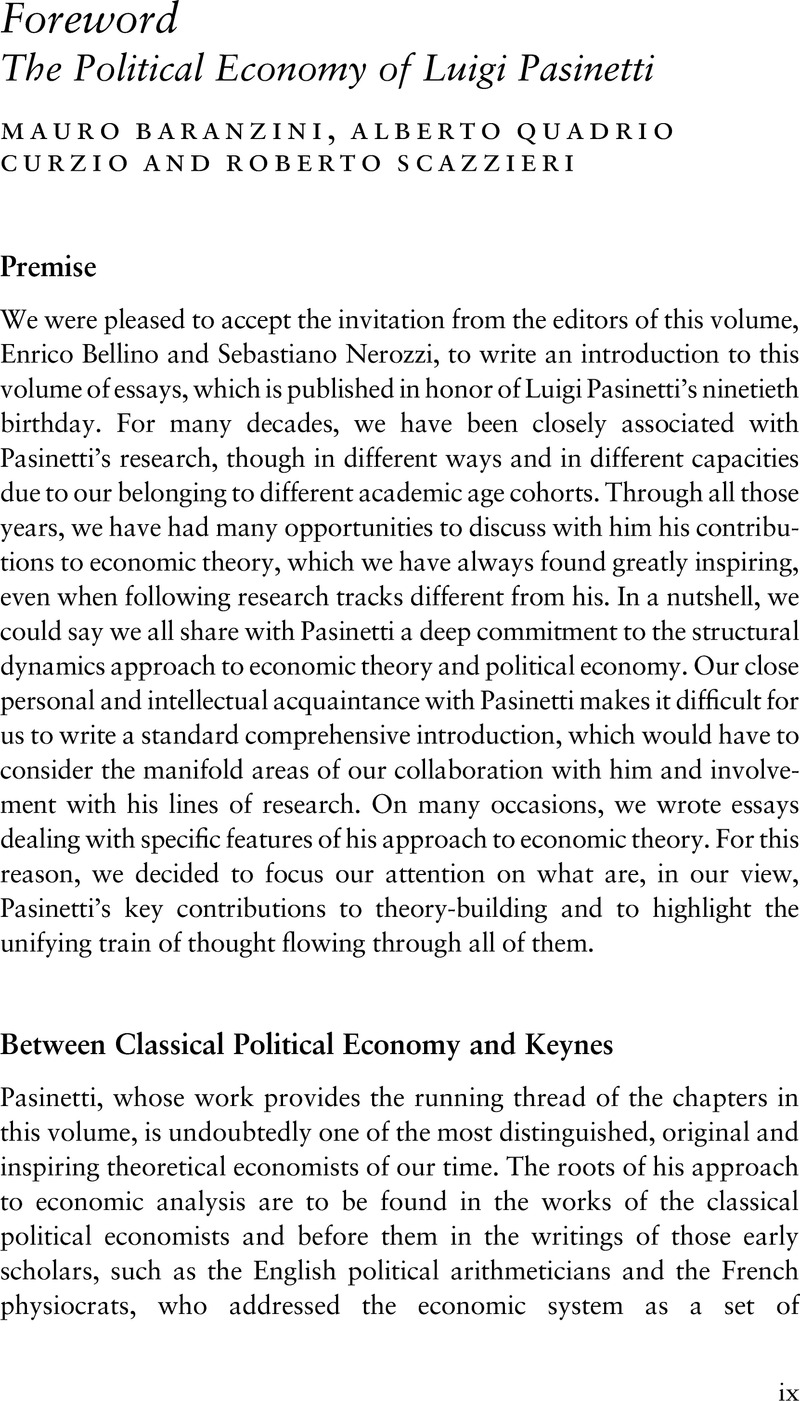Book contents
- Pasinetti and the Classical Keynesians
- Pasinetti and the Classical Keynesians
- Copyright page
- Contents
- Contributors
- Foreword
- Introduction
- 1 Reality (and Not Simply Abstract Rationality) as the Starting Point of Economic Theory
- 2 Economic Logic with Internal Consistency (and Not Only Formal Rigour)
- 3 Malthus and the Classics (Not Walras and the Marginalists) as the Major Inspiring Source in the History of Economic Thought
- 4 Non-ergodic (in Place of Stationary, Timeless) Economic Systems
- 5 Causality vs. Interdependence
- 6 Macroeconomics before Microeconomics
- 7 Disequilibrium and Instability (Not Equilibrium) as the Normal State of the Industrial Economies
- 8 Necessity of Finding an Appropriate Analytical Framework for Dealing with Technical Change and Economic Growth
- 9 A Strong, Deeply Felt, Social Concern
- 10 Why the Classic-Keynesian Trend May Be of Interest to a Young Scholar Today
- 11 Pasinetti’s Separation Theorem
- Author Index
- References
Foreword
The Political Economy of Luigi Pasinetti
Published online by Cambridge University Press: 17 February 2022
- Pasinetti and the Classical Keynesians
- Pasinetti and the Classical Keynesians
- Copyright page
- Contents
- Contributors
- Foreword
- Introduction
- 1 Reality (and Not Simply Abstract Rationality) as the Starting Point of Economic Theory
- 2 Economic Logic with Internal Consistency (and Not Only Formal Rigour)
- 3 Malthus and the Classics (Not Walras and the Marginalists) as the Major Inspiring Source in the History of Economic Thought
- 4 Non-ergodic (in Place of Stationary, Timeless) Economic Systems
- 5 Causality vs. Interdependence
- 6 Macroeconomics before Microeconomics
- 7 Disequilibrium and Instability (Not Equilibrium) as the Normal State of the Industrial Economies
- 8 Necessity of Finding an Appropriate Analytical Framework for Dealing with Technical Change and Economic Growth
- 9 A Strong, Deeply Felt, Social Concern
- 10 Why the Classic-Keynesian Trend May Be of Interest to a Young Scholar Today
- 11 Pasinetti’s Separation Theorem
- Author Index
- References
Summary

- Type
- Chapter
- Information
- Pasinetti and the Classical KeynesiansNine Methodological Issues, pp. ix - xxiiPublisher: Cambridge University PressPrint publication year: 2022

